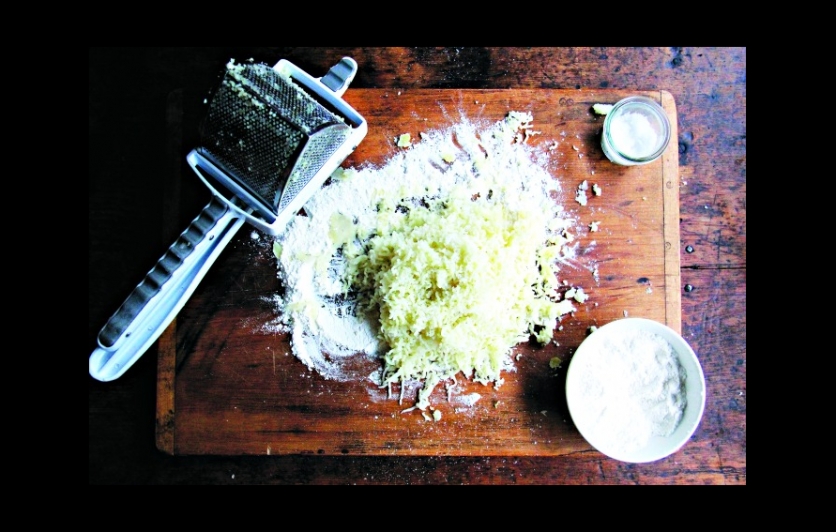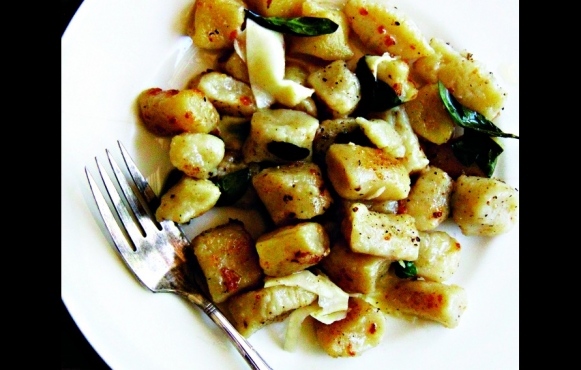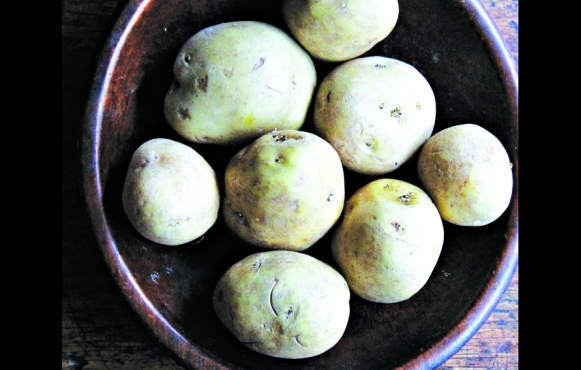Potato Gnocchi

If you’re comfortable kneading bread, making gnocchi will feel second nature. But if you’re not, have no fear—gnocchi, like bread, is rather forgiving.
For as long as I’ve known of potato gnocchi, they’ve inspired awe, evoking images of Italian farmhouses and skilled nonnas standing around flour-covered tables, rolling, cutting and crimping. They’re something I can never resist ordering when eating out, feather-light pillows drizzled with truffle oil, showered with Parmesan. They’re something, until recently, I might attempt only on a very special occasion for a very forgiving crowd.
So when I read in Tasting Rome about giovedì gnocchi—“gnocchi on Thursdays,” an age-old tradition still celebrated in Rome today—I paused. Every single Thursday, home cooks and trattorias alike serve gnocchi lightly dressed, often in a tomato-based sauce left over from the previous night’s meal. Author Katie Parla notes that while many Roman traditions have lost their strict following—trippa (tripe) on Saturdays, for instance, or suppli (rice croquettes) on Sundays— “gnocchi on Thursdays has held on.” It is, she affirms, “among all the elements of Rome’s cultural canon, the most reliable.”
The more I learned about giovedì gnocchi, the more I coveted it. From the new potatoes at my farmers’ market in July and August to the storage potatoes from my winter CSA, potatoes are a staple of my family’s diet, and I can’t find enough creative ways to use them—a once-a-week gnocchi tradition would be a welcomed one. Could I adopt it? Could Gnocchi Thursday become as routine as Taco Tues- day? I would have to conquer my gnocchi-making fear first.
While gnocchi can be made in various ways and with various enrichments, in their simplest form they are made with three ingredients: potato, flour and salt. When I ask Parla if eggs can be used, she says, “Yes, but because potatoes traditionally are a way to enrich pasta, additional enrichments like eggs are not necessary.” Moreover, when gnocchi contain only potato, flour and salt, “the potato is the protagonist.”
Parla learned her recipe from a master, Arcangelo Dandini, whose gnocchi she describes as “insane, magical, next level.” Dandini attributes the delicate texture of his gnocchi to his potatoes, which grow 500 meters above sea level, and while there might be something to this, it’s more likely because the variety of potato is high in starch. Parla explains that when using starchy potatoes, you need less flour to make the gnocchi dough. “Less flour means less gluten, which results in a tender and enticing piece of pasta.” The starchy russet is a great gnocchi potato for this reason.
But starting with dry, floury potatoes isn’t the only answer to achieving gnocchi nirvana—it simply takes practice. For the past few months, I’ve been making Dandini’s recipe regularly, and I’m discovering that making gnocchi is very similar to making bread: While you can try hard to quantify the proportions—for every one pound of potatoes use one and one-third cups flour, for example—the reality is that you have to adjust to feel: Every potato is different, and as the seasons change, potatoes change. If you’re comfortable kneading bread, making gnocchi will feel second nature. But if you’re not, have no fear—gnocchi, like bread, is rather forgiving. The formed lumps don’t have to look perfect, and while a ricer will help create a light-textured gnocchi, if you don’t have one, you can use a grater, fork or potato masher.
My gnocchi, I have accepted, will likely never be as exquisite as Dandini’s, but my recent experiments have helped me conquer my fear of the celebrated dumpling. Best of all I’ve discovered I can, as advised in Tasting Rome, “Cook once. Eat twice.” Gnocchi freeze beautifully, and for my family, one batch of Dandini’s gnocchi makes enough for two meals. This means a four-times-a-month ritual is only a twice-a- month endeavor—a solid foundation for a long-lasting tradition.







